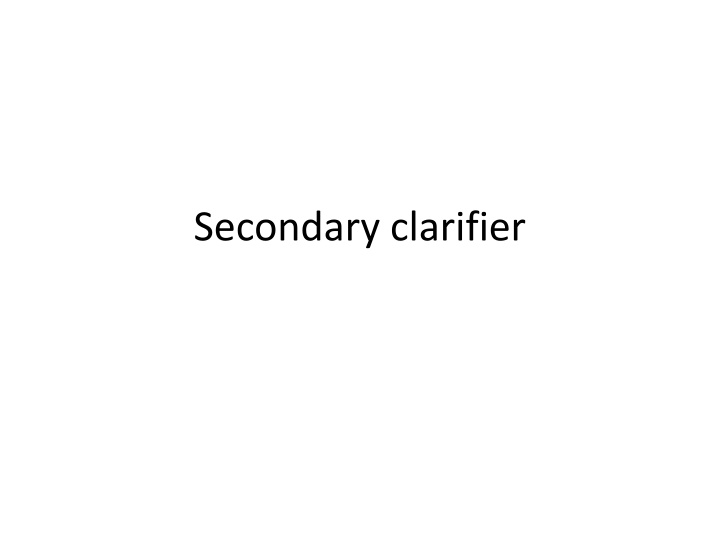
Effective Techniques for Secondary Clarifiers and Solid Flux Management
Discover the importance of secondary clarifiers in wastewater treatment, their dual objectives, and the management of solid flux. Learn about mixing and aeration techniques, diffused air systems, and more to optimize the efficiency of wastewater treatment plants.
Download Presentation

Please find below an Image/Link to download the presentation.
The content on the website is provided AS IS for your information and personal use only. It may not be sold, licensed, or shared on other websites without obtaining consent from the author. If you encounter any issues during the download, it is possible that the publisher has removed the file from their server.
You are allowed to download the files provided on this website for personal or commercial use, subject to the condition that they are used lawfully. All files are the property of their respective owners.
The content on the website is provided AS IS for your information and personal use only. It may not be sold, licensed, or shared on other websites without obtaining consent from the author.
E N D
Presentation Transcript
Secondary clarifier must accomplish two objectives a. they must produce a clarified effluent to meet discharge standard B. they must concentrate the biological solids to minimize the quantity of sludge
Solid flux is defined as the mass of solids per unit time passing through a unit area perpendicular to the direction of flow Solid flux has two component: 1. Solid flux due to withdrawal of sludge 2. Solid flux due to gravity settling.
Mixing and aeration techniques: 1. surface aerators consist of electrically driven propellers mounted in either floating or fixed support. The proppler throw the bulk liquid through the air and oxygen transfer occure both at the surface of the dropleets and at the surface of the bulk solution.
Diffused air system : May rely on the mixing provided by the air or may employ air entrainment May rely upon the mixing provided by the air or may employ air entrainment






















